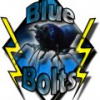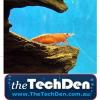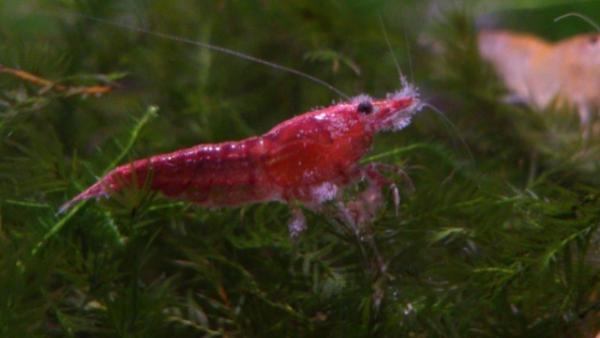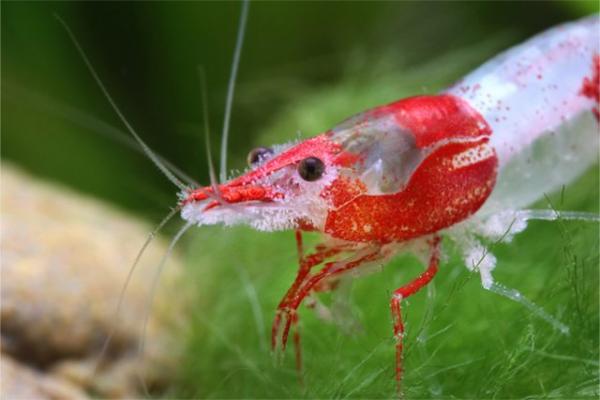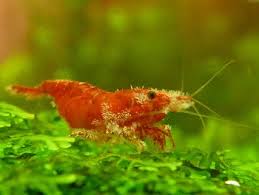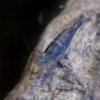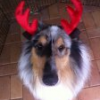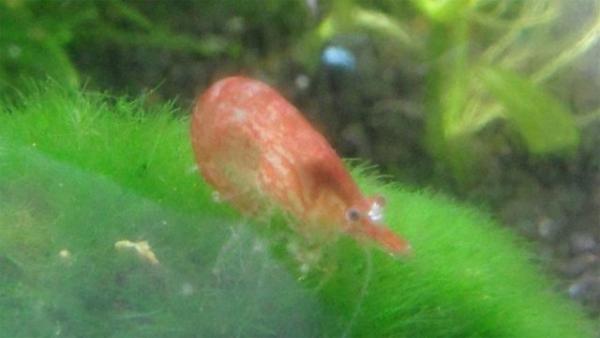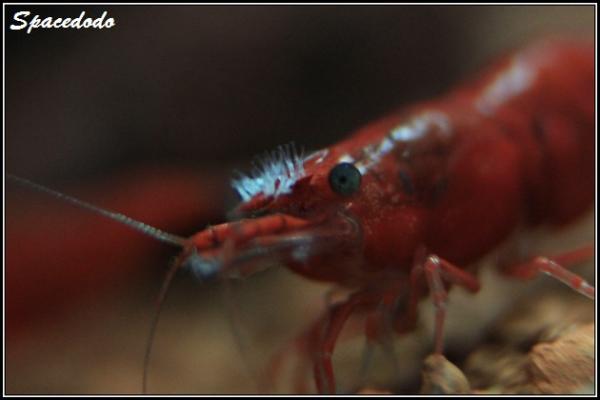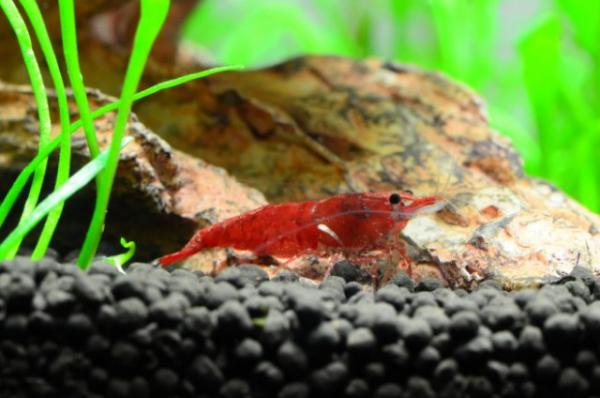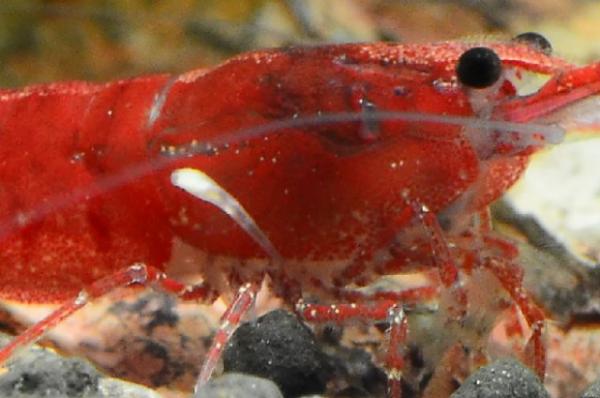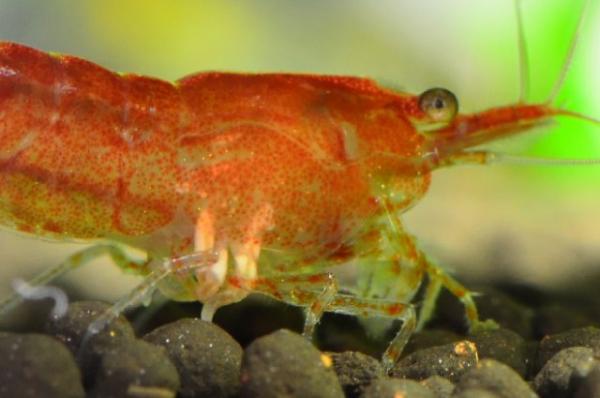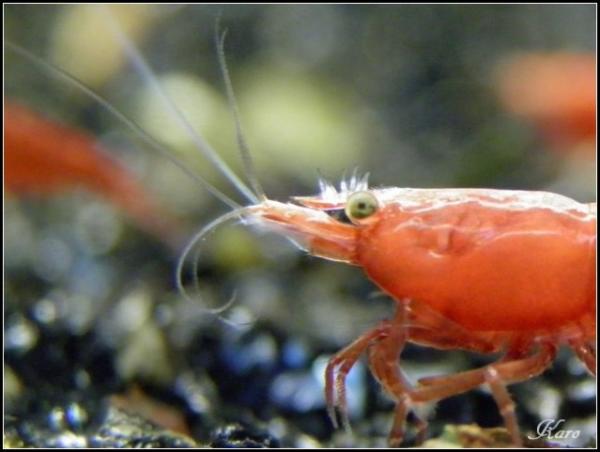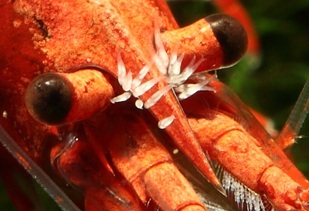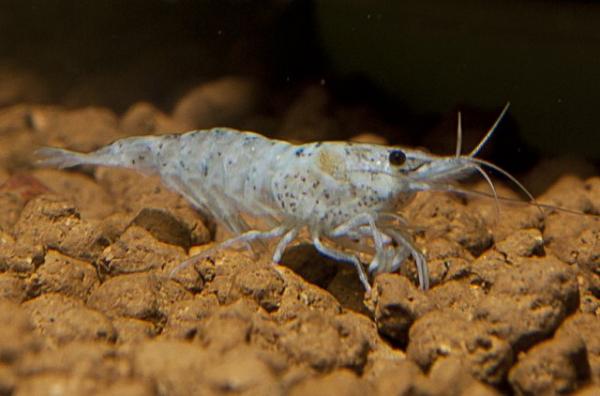Leaderboard
Popular Content
Showing content with the highest reputation on 09/11/14 in all areas
-
Got around 20 GB thanks to @JPN07 so here is some updated pics, tanks changed a little bit, same with filtration. still waiting on my 6500K 2x 10w Leds for the tank :) here is some updated pictures :) may be a little data heavy :P Will update again when i get the blacks :) Nathan2 points
-
Its not an isopod. It is a beatle larvae from the family Psephenidae also called "water pennies" link: http://www.mdfrc.org.au/bugguide/display.asp?type=5&class=17&subclass=&Order=1&family=240&couplet=0 Completely harmless to your shrimp... and a rather cool addition to the tank. You'll generally find them in flowing water in shallow streams stuck to rocks where they graze algae. If it completes its life cycle the adult beetle will leave the tank (and no doubt become a little dried husk on the window sill!).2 points
-
With the wealth of knowledge from experienced keepers here in SKF, we should have a repository of Shrimp Diseases where people can come to diagnose and hopefully find a cure to their shrimp's ailment. Just like in the world of aquatic fish keeping where identification and diagnosis of diseases in fish and known cures are part and parcel of every aquatic forum, so should we have one for shrimp. Vorticella I'd like to start this database off with the not so uncommon Vorticella parasite which looks like White fungus or mould growth on the shell of the shrimp. Vorticella is actually a protozoa of 16 known species, not a fungus at all. Vorticella are aquatic organisms, most commonly found in freshwater habitats. They attach themselves to plant detritus, rocks, algae, or animals (particularly crustaceans). Vorticella are heterotrophic organsims. They prey on bacteria. Vorticella use their cilia to create a current of water (vortex) to direct food towards its mouth. Typically, Vorticella reproduce via binary fission. The new organism splits from the parent and swims until it can find something on which to anchor itself. If left untreated, vorticella have been known to cause the death of the shrimp it was attached to. Here are examples of what it looks like. Known cures: Salt bath with aquarium salts. Be careful not to use table salt with Iodine. Dosage: 1 teaspoon to 1 cup of clean tank water (not tap water). Duration: 30sec to 1 minute. You might need to repeat this a couple of times until the vorticella disappears, so keep the infected shrimp in a breeder or hospital tank (could be another cup of tank water). Possible causes: Poor water conditions. Increase water change frequency. Low doses of the salt bath have been know to be ineffective. Ick and fungus cure meds don't work on Vorticella. Seachem Paraguard could work as well at the full recommended dosage, since this is a parasitic med. But Seachem have admitted Paraguard isn't invertebrate safe. So only try paraguard as a last resort and drip it into the tank premixed from a bucket of tank water slowly . This treatment is in no way a replacement for good tank husbandry. So keep up with your water change routines, and removal debris and uneaten food. Please add if you know of more diseases, how you cured it, what you tried that worked and what didn't work. Cheers.1 point
-
1 point
-
1 point
-
Handbook of Shrimp Diseases Older material (1995) for marine shrimp in aquaculture but the content is still relevant and might be useful for diagnosis. I was interested in comparing milky tissue resulting from muscle necrosis (not transmittable to other shrimp) vs microsporidia (a parasite that infects muscle tissue and is transferable to other shrimp).. I had a couple of milky shrimp that I was just letting live on... now culled to play it safe.1 point
-
Awesome :-) Good to also note your shrimplets survival rate, so that you can tweak the WP if necessary for the next drop. 15-25 shrimplet would be a awesome achievement.... Well done, and thanks for keeping us posted.1 point
-
Super excited, new generation emerged......Not entirely sure whether they should be directed towards my spotted head pinto project. Loving the colour/shade separation, trust the division will be maintained. Time will tell..1 point
-
1 point
-
Anti bacterial / Anti Fungal treatments part 2 Antibacterial + Antifungal - Edible flowers. Read this post. Couldn't improve on it, even if I wrote it myself. :P http://shrimpkeepersforum.com/forum/index.php?/topic/5701-edible-flowers-for-shrimp/ Antibacterial + Antifungal - Cinnamon sticks Releases essential oils and tannins. Dose 1 cinnamon stick bought from health food stores (not cinnamon sticks for decorations) of about 5-7cm per 20L of water volume. The sticks can remain in the tank after treatment. Or remove it if it does not match your decoration tastes. Antibacterial + Antiparasitic - Salt bath Already discussed earlier in this sticky. Salt bath with aquarium salts. Be careful not to use table salt with Iodine. Pure Sea water rock salts are also ok. Dosage: 1 teaspoon to 1 cup (250ml) of clean tank water (not tap water) prepared as an external bath (do not pour directly into your tank). Duration: 30sec to 1 minute. You might need to repeat this a couple of times Try not to dose your main tank directly, but instead, remove the problematic shrimp and treat outside the main tank. Preventative fungal or bacterial infections and assisting in moulting Dried Indian Almond Leaves, Oak Leaves and to a lesser extent Beech leaves contain humic substances that are slightly antibacterial and anti-fungal. Only dried and brown leaves of deciduous trees should be used. No ornamental trees or house plants should be used. An added benefit these leaves serve is that they are another food source the shrimp can eat. Alder cones contain fulvic acids (humic substances), buffer the pH at about 6 to 6.5, have a slightly anti-bacterial and fungicidal properties. For those of you who might be lucky enough to be able to source alder cones in Australia, and you don't mind the tannins produced, you have a good source of natural fulvic acids. As an added benefit, alder cones can be eaten by shrimp too.1 point
-
Anti bacterial treatments Here are some natural remedies for suspected bacterial infections. These treatments have been know to work for some people, and is safe for use in your shrimp tank. Antibacterial - Crack Willow bark The bark of the Crack Willow tree was used as an antibacterial treatment. It's not so absurd, as tree bark is know to have antibacterial properties. Either Fresh or Dried bark. 2-3 strips of bark 5cm x 2cm. Change pieces of bark after 2 weeks. And discontinue treatment after 4 weeks. However, shrimp that might already be infected will still die. Barks of other trees could also be used, but ensure that it is as clean as possible, there is no sap, and isn't showing signs of rot (as that indicates the tree is weakened and lacking antibacterial properties itself). Can be supplemented with an treatment that is eaten below to treat internally. Antibacterial - Fennel greens The green fresh leaves of the fennel bulb can be fed dried or blanched. Works as an antibacterial treatment internally. As with all fresh food sources, remember to wash well, and ensure it's free of pesticides. Antifungal - Black or Green Tea (Important: Do NOT use flavoured tea blends. Tea from organic or health food stores preferred) Tea contains antibacterial and fungicidal tannins. Green tea is especially preferred, as varieties like Bancha or Kukicha are low in caffeine and green tea on average contains more polyphenols than Chinese teas. Pour tea as usual, and either drink or discard the first infusion. Only use the 2nd or 3rd infusion. 1ml of tea to 1L of aquarium water. 25% water change after 2 days. Add more tea to the water change adjusting the tea amount to the water changed. So if you change 1L of water add another 1ml of tea. Alternatively you can use a green tea bag. Infuse tea bag for half a minute, and either drink or discard the first infusion. Then hang the tea bag in the tank. Note: if the tea bag is made of paper, it might either dissolve or get eaten by shrimp. So check often to ensure the contents aren't going to spill into your tank. Anti bacterial/Fungicidal - dried walnut leaves, dried oak leaves or dried banana leaves Like Indian Almond leaves, these leaves offer the same antibacterial and fungicidal treatments by releasing tannins, essential oils and humic acids. 3 leaves to 100L of water. Leaves can remain till it's eaten or dissolved. Harvest leaves that are dried naturally during the change in seasons.1 point
-
Update on my outbreak: treated with 3 half doses of No Planaria, 24 hours apart and followed by a water change 24 hrs later. No negative effects were observed on shrimp or shrimplets, only minor snail death(rams horns) but apparently complete eradication of Scutariella within the first day, and hydra over the 3 days. An end result I'm happy with :)1 point
-
This thread on diseases and diagnosis is meant for the SKF community to contribute to and to add their experiences. Can some one who has treated their tank for Planaria or Hydra share their cure method, what worked what didn't, dosage, duration and pictures?1 point
-
Parasites: These might not necessarily be detrimental to the shrimp. Many live in a symbiotic relationship with the shrimp as can be seen in wild shrimp. But if it was me, I say burn them parasites! (Scutariella): Leeches (I have no idea what this one is called): Treatment is the same as Vorticella. Known cures: Salt bath with aquarium salts. Be careful not to use table salt with Iodine. Dosage: 1 teaspoon to 1 cup of clean tank water (not tap water). Duration: 30sec to 1 minute. You might need to repeat this a couple of times until the parasite drops off, so keep the infected shrimp in a breeder or hospital tank (could be another cup of tank water) to allow easier re-treatment. Another treatment that has been known to work is Genchem's "No Planaria". Use half the Dosage as per instructions on the packaging of No Planaria. Duration: 3 days, although you might see the pests disappear after one day, continuing treatment will ensure any unseen parasites are also killed. Perform a water change at the end of No Planaria treatment. Watch for ammonia spike and treat if necessary. Similarly, Benibachi Planaria Zero well also work in killing these parasites. Another product that might be useful in treating these pests is a product called "Internal Parasite Clear" by Guangzhou Bigfish Aquarium Corp. Update: Internal Parasite Clear (half dose including 1/2 dose follow up treatment 3 days later) and Planaria Zero by Benibachi have been confirmed as effective treatment by SKFA members.1 point
-
Bacterial infection: This is one of those diseases that is still very difficult to diagnose in shrimp. There isn't much information around. Nor are there lots of pictures. Bacteria never stop and smile for the camera. In various "transparent" shrimp species in which the organs are visible from the outside, you can observe an internal infection, the inner translucent bodies which appear dark in healthy shrimp are pink and look as if they were inflamed in infected shrimp. Various studies of diseased shrimp showed that their bodies were infested with micrococci (bacteria). Infected animals with recognizable symptoms die 2-4 days later. Treatment is not yet possible. Shrimp on left is infected with Micrococci. very sick Tiger The only resource I can find on the subject closely related is this article: http://www.fishdept.sabah.gov.my/download/diseases%20of%20cultured%20prawns.pdf I have uploaded it to SKF in case we ever loose the document linked above. conv_4324.pdf Symptoms: Unexplained Death of multiple shrimp, pinkish flesh , loss of legs or antennae, holes in the shrimp's carapace, extreme loss of colour Treatment 1: large water changes (80%) daily. Treatment2: Hydrogen Peroxide H2O2 (3%) Dosage: 1ml / 4L (upto 2ml / 4L if you think the situation is drastic) Duration: once per day for 5 days. Treatment3: UV light (only effective if the bacteria is water borne) Duration: 5 days. The infection could be parasitic in nature. And the bacterial infection is just secondary. So be very careful to examine the shrimp for signs of external parasites first. Be aware that when you notice visual signs of the symptoms as indicated above, it's usually very advanced in it's infection. Expect more deaths of some shrimp that are too far gone. You might save the rest however. You'll probably have already lost quite a few shrimp. It's either do nothing or break the tank down, sterilise it and start again. Or Go for broke and try a treatment. Hydrogen Peroxide will have the added benefit of killing off any algae in the tank. The increase heat in summer weather can also increase the likely hood of bad bacterial growth. This treatment is in no way a replacement for good tank husbandry. So keep up with your water change routines, and remove debris and uneaten food. ** I need more pictorial evidence of bacterial infection, so if you have a picture, let me know ** 14 April 2015 - Update based on experiences of one of our SKF members. Unfortunately for this shrimpkeeper it was too late to save these shrimps, but hopefully this experience will help someone else. 250+ shrimp were lost before the bacterial infection was halted. A vet was consulted and he eventually ended up contacting a senior lecturer of aquatic animal health at University of Adelaide school of veterinary science. He stated that bacterial infections being internal or external are almost always gram negative in aquatics and recommended using oxytetracycline at a dose rate of 1000-2000mg per 40ltr of water. Diagnosis: "Symptoms were some looked normal, most lost colour and went very pale. All shrimp went very sluggish with a lot dying upright where they stood. They actually looked alive until you touch them and they fall over. Deaths were minimal and spread out to start with, then became rapid and multiple deaths quickly. I still lost a few shrimp after treating for 2-3 days but I would imagine that to be normal, as it was already too late for them." The shrimp looked normal but sluggish, doesn't seem to be any changing of colour that shows until they die. However, you might be able to spot infection of the internal organs (located in the head of shrimps) prior to death where the organs turn an orangey colour. After death, some shrimp developed dark brown to black patches on the shells, similar to “Chitinolytic bacterial disease, Shell disease, Brown spot disease, Black spot disease, Burned spot disease, Rust disease.” Some pictures included. Notice the orange colour on the head, which clearly show signs of infection of the internal organs. CBS Blue Bolts CBS Dosing method: Oxytetracycline is available in 2 forms. Powder and injectable. The injectable form was used as it is a stronger form. This meant that we could use less to obtain the required dosage. Dosed straight into the water column at 1000mg per 40ltr of water. Follow the dosage instructions for the FULL duration of the treatment, even if your shrimps are looking better. Do NOT stop treatment short, as this will develop strains of bacteria with resistance to future treatment. Drug worked very well and reasonable quickly. Deaths stopped within 2 days and no more deaths since. The drug will stay active in the water for 2 days. Dose the required amount on first day. Then 50% water change on 2nd day and dose again. Then 30-40% water changes for the next 2 days and then did another full dose and left it. Waited 2 days and another 30% water change. This medication will turn your water yellow, but disperses after about a week. Lessons Learnt: Quarantine any new shrimp before introducing them into your existing colony. The shrimps were kept in this member's tanks were filtered via a sump system. The infection of one tank might have spread to all the other tanks due to the shared filtration and water. Caution: Oxytetracycline and any Tetracycline based product is an antibiotic. As with any antibiotic product, there is a strong chance that it will impact your filter media bacteria in a negative way. Please take all precautions to save the bacteria in your filter media. Turn off the pumps to your filter temporarily. Remove some or all your filter media and place in another location with aeration. Another option is to remove the livestock that needs treatment into a separate hospital tank for the duration of the treatment. Shrimps are small, so even a 2 Litre plastic container with tank water might be enough to hold them temporarily. Update Dec 2015 - Apart from the Tetracycline antibiotics already mentioned above, the following are additional antibacterial treatments. Please note that these are usually prescription drugs and will need a vet or doctor’s script to obtain. As with all antibacterial medications, please be extra careful to avoid using this in the tank, as it might kill off your beneficial bacteria. Instead remove the infected shrimp to a temporary hospital tank or bucket for the duration of the treatment. Some options for purchasing Oxytetracycline: http://www.thetechden.com.au/Blue_Planet_Aquari_Cycline_25_Tablets_p/el080.htm http://www.vetnpetdirect.com.au/OXYMB?utm_medium=cpc&utm_source=myshopping&utm_campaign=Pet+Supplies&gdftrk=gdfV25674_a_7c2113_a_7c7878_a_7c2417&utm_term=Oxymav+B+100g Out of all the antibiotics available, Tetracycline and maybe quinolone product called Baytril below would be the most accessible. Note: always follow the full course of the treatment or you risk the problem of antibiotic resistance. Baytril ‘Baytril’ is the brand name of an antibiotic called enrofloxacin. It is available in tablet form, as an injection and also an oral syrup. The oral syrup can be dissolved in the water. Enrofloxacin is also sold under other brand names in Australia, notably ‘Enrotril’. All brands of enrofloxacin oral syrup in Australia are the same strength. ‘Enrotril’ and ‘Baytril’ oral syrups both contain enrofloxacin at a strength of 25mg/ml and therefore from a therapeutic point of view are identical. Enrofloxacin belongs to a group of antibiotics called fluoroquinolones. Another antibiotic in the same group, used more overseas, is ciprofloxacin which is often abbreviated to ‘cipro’ by pigeon fanciers. Baytril can be used for muscular necrosis and milky white discolouration of shrimp. Dosage: use 1ml per 50L of water per day for a full 5 day treatment. Even if the shrimp looks better after 2 days, continue the full 5 day treatment to avoid resistance of the bacteria to the antibiotic. Where to obtain: Baytril is a prescription medication that only be obtained from talking to your veterinarian. It’s broad spectrum antibiotic that is used for birds. But a search on Google might get you some results for direct purchase sources. Chloramphenicol Source - http://www.medicines.org.au/files/txcchled.pdf Chloramphenicol belongs to a group of medicines called antibiotics. I’m not sure if this requires a prescription (ask your chemist). Can be used for internal and external bacteria. Dosage: 1.5gm per 100L of water. Change 80% of water after 1 week and repeat dosage again for another week. Then return the shrimp to the main tank and observe. If you can also soak the food in Chloramphenicol, and fed to the shrimp, then the drug can also be absorbed internally. Ampicillin Ampicillin is an antibiotic in the penicillin group of drugs. It fights bacteria in your body. Ampicillin is used to treat many different types of infections caused by bacteria. Ampicillin is effective against Gram-Negative bacilli, however its poor solubility means it has to be fed to the shrimp. Dosage: 2-3gm per 100gm of food. Where to obtain: Not easily found in Australia, but this might be available for some of our overseas members. It’s a prescription drug, so be aware that you cannot just buy it over the counter. Gentamicin Gentamicin is a bactericidal agent that works by inhibiting protein synthesis in susceptible Gram negative bacteria, Citrobacter, Endobacter, aerobic, pseudomonas or rod shaped bacilli. Dosage: 1ml/day per 100L of water for duration of 5 days. Perform a 25% water change each day.1 point


